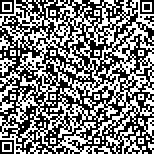|
| Abstract: |
| Measurements are always interfered with glint noise in a radar target tracking system, which makes the performance of traditional filtering fall sharply and even divergent. Against this problem, a new Interactive Multiple Model Particle Filter (IMMPF) algorithm is proposed for target tracking by introducing PF into Interactive Multiple Model (IMM). Different from the general method to select importance density function from PF, the particles are extracted from observation likelihood function within depending on observation noises. Observation noise is modelled, and the latest observation is fused, then the target can be effectively tracked. Finally, the optimized method is simulated with respect to bearings-only tracking of maneuvering target in a glint noise environment. Compared with the existing filtering algorithms, it turns out that the developed filtering algorithm is more efficient and closer to the real-time tracking requirement of high maneuvering targets. |
| Key words: observation noise interactive multiple model target tracking particle filter |
| DOI:10.11916/j.issn.1005-9113.17093 |
| Clc Number:TN953 |
| Fund: |
|
| Descriptions in Chinese: |
| 一种改进的交互多模粒子滤波跟踪算法 冯海林,郭娟丽 (西安电子科技大学 数学与统计学院,西安 710126) 创新点说明:1)针对闪烁噪声建立一种新的模型,即混合高斯噪声模型。已有文献中都是使用高斯白噪声模型,这不符合实际问题中涉及到的闪烁噪声的特点,而本文所建立的混合高斯噪声模型能更准确地描述闪烁噪声的拖尾性,这是本文的创新点之一。 2)在粒子滤波中重要性密度函数的选取上做了改变。本文以观测似然函数作为重要性密度函数,并建立其与观测噪声之间的联系。这解决了传统粒子滤波中粒子抽样的困难,而且这样做最大的好处是能用到最新观测信息,降低粒子退化问题。这是本文的创新点之二。 3)文献[14]中交互多模粒子滤波不能很好地处理闪烁噪声问题,文献[18]中改进的处理闪烁噪声的粒子滤波不能较好地解决目标机动问题。本文第三个创新点是结合交互式多模型算法和本文改进了重要性密度函数的粒子滤波,从而解决闪烁噪声环境中的机动目标跟踪问题。据我们所了解到的文献,这方面的工作几乎没有。这也是本文在目标跟踪问题中的一个尝试。 研究目的: 解决闪烁噪声环境中机动目标的跟踪问题。 研究方法: 1)理论方法:状态估计方法;贝叶斯估计方法。 2)试验方法:蒙特卡罗重要性抽样方法,重采样方法。 3)主要设备:计算机。 研究结果: 在闪烁噪声存在的条件下,即使目标发生机动,通过此算法也能对其进行较为准确地跟踪,即对目标在每一时刻的状态都能做出估计。 结论: 仿真实验表明,本文算法对闪烁噪声环境中的机动目标进行跟踪的结果比已经存在的一些算法更加准确,跟踪精度更高,误差更小,且算法具有较强的鲁棒性和较快的收敛速度,符合对闪烁噪声中的机动目标跟踪的期望。 关键词:观测噪声,交互式多模型,目标跟踪,粒子滤波 |




